Industrial Stormwater Pollution is a significant problem in Oregon.
We’ve compiled a map of the Oregon facilities that have added significant pollution to our waters in recent years. Click below or keep scrolling to view the map.
NEDC’s Stormwater Pollution Mapping Project is designed to provide an easy-to-use application for community members and advocates to assess industrial stormwater pollution in Oregon’s communities and local waterways. This application, available here, identifies industrial facilities across the state which, over the last five years, have reported multiple exceedances of stormwater pollutant benchmarks. The program will help NEDC identify at-risk waterways across the state, and provides Oregon communities with an essential resource in understanding local pollution sources. In turn, this will allow NEDC and local advocates to push for more effective stormwater treatment measures where they are needed the most.
Introduction: The stormwater pollution problem and NEDC’s history of advocacy
Stormwater pollution from industrial facilities threatens the health of Oregon’s aquatic ecosystems. Rainfall or snowmelt lands on these sites and comes into contact with industrial materials, where it can pick up the toxic pollutants. That polluted runoff is then often transported directly to nearby rivers. As our watersheds have been urbanized and impervious areas have increased, we have reduced the amount of vegetation that can naturally filter out these pollutants. As a result, when not managed properly stormwater runoff from industrial sites can carry dangerous amounts of toxic pollutants to the state’s waters, with severe impacts to the ecological health of these waters and to local communities.
For over 20 years, the Northwest Environmental Defense Center has led the fight to protect Oregon’s waters from industrial stormwater pollution. Through a series of lawsuits, we have secured a new stormwater permit for industrial facilities that complies with the Clean Water Act and can ensure this dangerous pollution is minimized to the greatest extent possible. Oregon’s “1200-Z” permit, covering almost 900 facilities across the state, requires aggressive action from industrial sites to reduce or eliminate pollutants from being discharged in stormwater. NEDC’s advocacy has led to a permit that puts Oregon at the forefront of stormwater regulation in the United States.
This, however, is not the end of the fight against industrial pollution in Oregon. With this more protective permit in place, NEDC has continued its role as an essential watchdog working to ensure the permit is properly implemented, and that Oregon’s waters receive the protections they deserve. NEDC students and staff review application materials for each new facility seeking covering under the 1200-Z permit, submitting comments identifying deficiencies in facilities’ pollution reduction plans. And, when necessary, NEDC brings Clean Water Act “citizen suits” against facilities that are violating the new permit. These lawsuits often conclude with settlement agreements requiring the facility to implement significant improvements in its pollution control measures.
View our Community Stormwater Pollution Map to see which facilities are polluting your local waterways.
Check out your waterway using EPA’s How’s My Waterway tool!
Community Stormwater Initiative
NEDC’s Community Stormwater Initiative is the next step in NEDC’s long history of stormwater-related advocacy. The program is designed to provide education, technical assistance, and other resources to Oregon communities that are impacted by stormwater pollution. the first step of the Initiative, reflected in this report and mapping application, is to identify Oregon river segments that are currently most severely impacted by stormwater pollution. This is designed to provide an easy-to-use tool for communities across the state to identify facilities that are consistently failing to meet pollution benchmarks.
To create this mapping application, NEDC students and staff performed a comprehensive review of the most recent five years of stormwater sampling data from nearly 900 industrial facilities across the state. Facilities identified as “Significant Dischargers”— defined as having two or more exceedances of the same stormwater pollutant benchmark in two of the previous five years—were added to our mapping application.
The resulting map provides a unique visual representation of stormwater-related threats across the state, and serves as a vital tool in identifying Oregon communities that are currently most at risk from toxic stormwater pollution. NEDC will use this information to begin outreach to these impacted communities to provide information about the dangers of stormwater pollution, and to build local networks that monitor new and existing industrial activities in each community while creating community-led opportunities to push for stricter pollution controls to improve local water quality.
WATERWAYS OF CONCERN
NEDC’s stormwater mapping project identifies several waterways for which industrial stormwater is a major concern. Over the last five years, multiple industrial facilities have consistently failed to meet benchmarks for pollutants such as zinc, copper, aluminum, total suspended solids, and others. In the coming months, NEDC will be coordinating with communities near these impacted waterways to provide resources to more fully understand local stormwater pollution. One primary goal for this initiative is to connect communities with engineering and technical expertise to review public documents and ensure locally permitted facilities are reducing stormwater to the maximum extent possible.
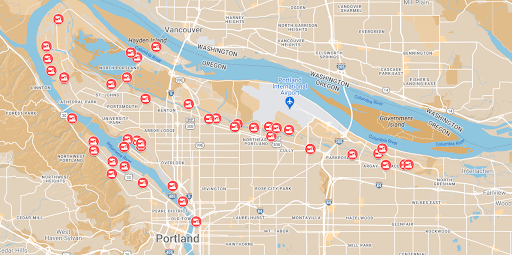
Portland Metro Area: Willamette River and Columbia Slough
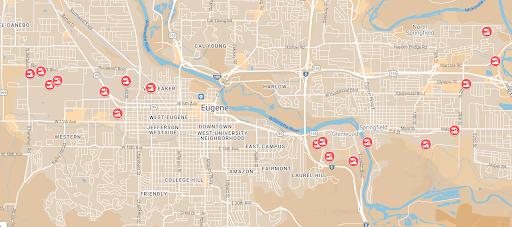
Eugene/Springfield: Willamette and McKenzie Rivers
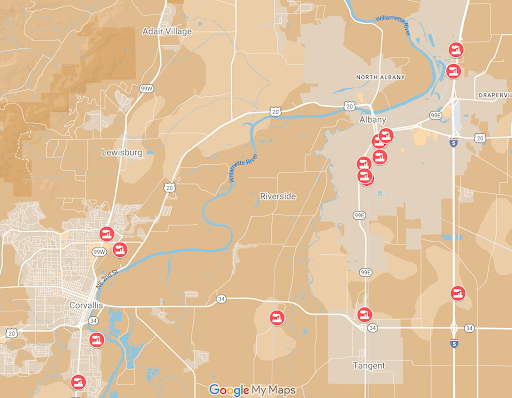
Albany and Corvallis: Willamette River
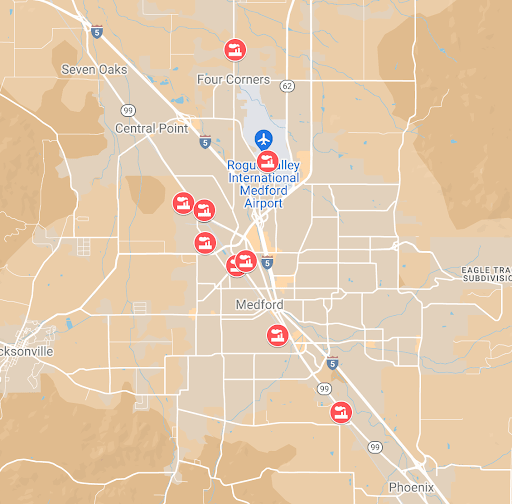
Medford: Bear Creek
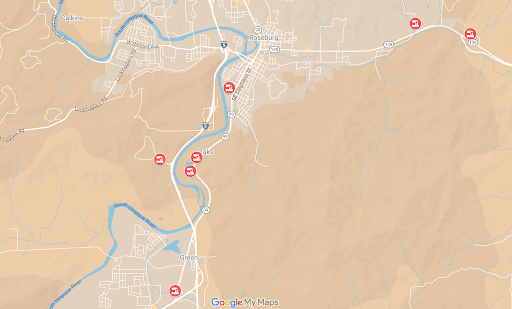
Roseburg: South Umpqua River and Tributaries

